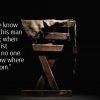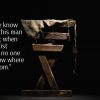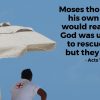Victor Glover will pray his way to the moon.
When the Artemis 2 takes off sometime late next year, four astronauts will strap into a gumdrop-shaped capsule atop a tower of rockets taller than the Statue of Liberty. Mission control will count down—10, 9, 8, …—and a controlled explosion with 8.8 million pounds of force will fire, throwing the four astronauts from the coast of Florida into high-earth orbit, where another engine, setting spark to a mixture of liquid hydrogen and oxygen, will thrust them beyond the bonds of Earth for the first time in more than half a century.
And Glover, the pilot of the spacecraft, will say a few words to God.
He told CT he will listen to God, too, attending to the quiet stillness in his mind where he can lay down his own personal interests and desires and truly say, “Thy kingdom come, thy will be done, on earth as it is in heaven.”
“I know that God can use us for his purposes,” Glover said. “When Jesus was teaching the disciples to pray, he used that very specific prayer that we all know, ‘Our father who art in heaven, hallowed be thy name …’ So, listen, I am a messenger of his kingdom; his will be done.”
Glover was named Monday as one of the four people who will lead humanity’s return to the moon more than 50 years after we stopped going. The other members of the crew are Reid Wiseman, Jeremy Hansen, and Christina Koch, who will be the first woman to go to the moon.
Glover, 46, is a Navy captain who flew combat missions in Iraq before becoming a test pilot, a NASA astronaut, and a crew member of the International Space Station. He will become the first Black man to go to the moon, breaking a racial barrier the American space agency set up without explanation in the 1960s.
He is also a committed Christian, a member of a Church of Christ who occasionally teaches Sunday school. He packed prepackaged Communion cups and a physical Bible when he first went to space in 2020. He mentioned God at both the beginning and end of his statement at the press conference Monday when the Artemis 2 crew was introduced.
“I very intentionally put God at the front, in the very first comment, and at the end,” he told CT. “It’s the way I try to live my life as well. The beginning, the end, and all the way through.”
If this mission to the moon is successful, the Artemis 2 will be followed by Artemis 3, which will land on the moon and set up camp. More astronauts will follow, with plans to develop the infrastructure and further the science that could, soon, allow humans to launch from the moon to Mars.
Glover, speaking at the press conference, imagined the mission as a relay race, a baton of discovery passed generation to generation, crew to crew, deeper and deeper into space.
The Artemis 2 mission, however, doesn’t seem like an extension of Apollo 17 in 1972, the last mission to the moon, when astronauts explored the lunar surface with a rover and ran tests on the effects of cosmic rays on mice. It has more in common with Apollo 8, the first crewed spacecraft to leave low orbit. Frank Borman, Jim Lovell, and William Anders flew around the moon, proving all the equipment worked and surveying the surface for potential landing sites, and looking back at Earth for the first time from that vantage point.
Artemis 2 is also scheduled to do a flyby—traveling more than 200,000 miles to loop around the moon, going about 4,600 miles to the far side before gravity catches them, pulls them around, and points them back to Earth for the return journey.
One space journalist said, “Their job is to break in a new transportation system and come home to tell everyone all about it.” This is true, but “breaking it in” involves testing whether a craft that has never flown with people in it can sustain life. In the words of NASA, they have to “prove the … life-support systems, and validate the capabilities and techniques needed for humans to live and work in deep space.”
Glover will specifically test how well the gumdrop-shaped capsule, the Orion, can maneuver in space under human control.
As he waited to hear whether he was going to be assigned to the Artemis 2, though, Glover found his prayers turning less toward what would happen in space and more toward what would happen on Earth. He worried that being Black would be divisive.
“I don’t want to be divisive,” he told CT. “I want to represent the American people.”
He tapped the American flag emblem sewn onto his left sleeve. “I wear this,” he said, “very intentionally. So I prayed a lot about that. More than whether I would be on the mission, I prayed about how to navigate that.”
Glover believes in the importance of diversity and says it’s essential for the future of NASA, which needs to represent all America and the aspirations of all humanity. But he wishes someone else had already broken the racial barrier. It could have been Ed Dwight, a Black astronaut candidate in the 1960s who wasn’t chosen for any of the Apollo missions. It could have been Guion Bluford, who became the first Black man in space in 1983, or Mae Jemison, the first Black woman in 1992, if only NASA had been going to the moon in those years. Instead, it’s the 21st century, and it’s him.
“I had a conversation with my boss,” Glover recalled. “I said, ‘I really hope NASA doesn’t say, “We’re going to send the first Black man to the moon.”’ I told them I might put my wings on the table. The reason is not because that’s not important. That is actually vital for today’s space agencies to consider. But the messaging could be divisive, and I don’t want to be divisive.”
When the announcement came, shortly after Joe Biden became president, the language was “first woman” and “first person of color.”
“That’s not exactly what I said, but it’s so close,” Glover said. “It’s like toes on the line.”
But he decided not to resign. As he prayed, he thought about how he could represent America and, he hoped, add esteem to the emblem of the American flag. He asked God to help him navigate the culture and politics.
Glover was still nervous about this when he stood on the stage at the NASA space station in Houston on Monday. The other astronaut candidates who could have been selected for the mission were in the room for the announcement. Would they begrudge him his spot on the Artemis 2? Diminish his years of training and experience—24 combat missions, 3,000 flight hours, three graduate degrees, four spacewalks—because of the color of his skin? Would their expressions say, ‘It should have been me’?
“That kind of worried me, the idea of standing on the stage and looking at my colleagues’ faces,” Glover said. “But looking at the love and support—I could see it in their faces. That, to me, was the most significant thing of the announcement. Getting through yesterday alleviated a lot of fear.”
Now, seven months before the scheduled launch, his thoughts can turn fully toward the mission and the moon.
The last time he was in space, Glover said, he really felt closer to God. Not because he was above the sky but because, as James 4:8 says, when you submit yourself to God and come near to God, God comes near to you.
Reading the Bible in space was a powerful experience. Glover remembers being in weightlessness in his quarters on the International Space Station and reading Philippians 4. Some of the words were so familiar to him, like verse 13, which says in his New King James Version, “I can do all things through Christ who strengthens me.” But there were other passages he felt like he was seeing for the first time. Like in verse 12, where Paul writes, “I have learned both to be full and to be hungry.”
Glover had never noticed that before. It expressed exactly how he felt about himself and his training and mission.
“My wife asked me if I was nervous before going on my first spacewalk. I said no, I have truly done everything I can to prepare, including praying and reading my Bible. I told her about that verse,” he recalled. “I am satisfied with my studying, my preparation. I can be calm. But I can also still be hungry for what I’m going to do tomorrow.”
Glover hopes to bring his physical Bible to space again, though he doesn’t know yet if that will be possible. He could also have the Scriptures on a tablet computer, to better meet weight requirements, but he prefers a real book.
He hopes to be both hungry and full again, when the time comes. There’s a lot still to be figured out for the mission. The challenges—the danger—are rising before him.
“We know the risks we’re talking about. This is the first flight of the vehicle,” he said. “My biggest fear—I may still be processing that.”
So he will say a few words of prayer when the Artemis 2’s rockets fire and the four astronauts lift off. He hopes that other Christians will pray too as they watch the launch, follow the mission, and read about the plans to return to the moon and push past it to explore Mars.
“Pray for our crew,” he said. “Pray for the hardware. Pray for the team all around the world that support this. And the hardest mission of all is the one our families are about to embark on. If you could pray for our families, that would be amazing.”
[ This article is also available in Português. ]
Subscribe to CT for less than $4.25/month
Sign up for our newsletter: Get the most recent headlines and stories from Christianity Today delivered to your inbox daily.
source














Post comments (0)